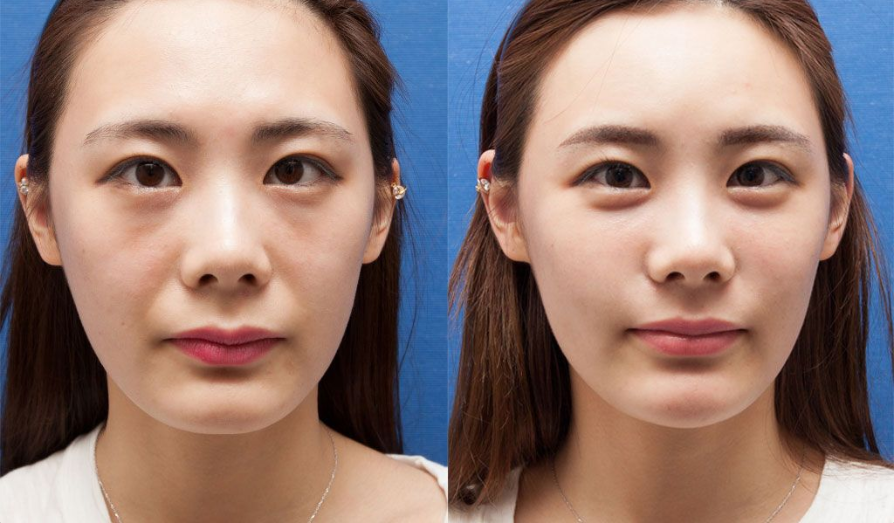South Korea has earned a global reputation for its natural, refined approach to cosmetic surgery—especially double eyelid surgery (blepharoplasty). Every year, thousands of international patients, from across Asia to the West, fly to Seoul for this specific procedure. But if you’re a foreigner considering it, you likely have questions: Is it safe? Is there language support? How do I start the process?
This guide breaks down everything you need to know—from visa tips to recovery logistics—about getting double eyelid surgery in Korea as a non-Korean.
🇰🇷 Why Korea Is a Global Hub for Eyelid Surgery
Before diving into logistics, it’s important to understand why so many foreigners choose Korea for this procedure:
- World-class surgeons trained in Asian and multi-ethnic eyelid anatomy
- Highly customized and natural-looking results
- Advanced techniques (incisional, non-incisional, mini-incision)
- Affordable pricing compared to the U.S., Japan, or Singapore
- English-speaking medical staff and medical tourism infrastructure
✅ Yes—Foreigners Can Get Eyelid Surgery in Korea
Whether you’re a tourist or coming for medical purposes, foreign nationals are welcome to undergo double eyelid surgery in Korea. Many clinics have years of experience working with:
- Korean diaspora living abroad
- Chinese, Thai, Vietnamese, and Filipino patients
- Westerners (including those of European, African, or mixed descent)
- Middle Eastern patients
The Korean government actively supports medical tourism and clinics are well-prepared to accommodate non-Korean eye anatomy, expectations, and recovery needs.
📋 What You Need Before Booking
Here’s what to prepare before your flight:
1. Valid Passport & Visa
- Most tourists from North America, Europe, ASEAN countries, and Oceania can stay up to 90 days visa-free.
- If you’re from a country that requires a visa, consider applying for a medical visa (C-3-3 or G-1) through a certified clinic.
- Clinics can help provide documentation to support your visa application.
2. Clinic Selection & Online Consultation
- Research clinics known for natural results and with English/your language coordinators.
- Most clinics offer online or video consultations via email, WhatsApp, or KakaoTalk.
- Send photos of your eyes (front and side view) to receive personalized suggestions and pricing.
3. Travel Itinerary
- Plan to stay 7–10 days minimum in Seoul
- Day 1: Consultation
- Day 2–3: Surgery
- Days 4–9: Follow-up, stitch removal, swelling management
- Day 10+: Optional return flight (safe after stitches removed and first major swelling subsides)
💳 How Much Does It Cost for Foreigners?
Cost can vary depending on the method, surgeon experience, and clinic reputation:
| Surgery Type | Typical Range (KRW) | USD Equivalent |
|---|---|---|
| Non-Incisional | ₩1.2M – ₩2.0M | $900 – $1,500 |
| Mini-Incision | ₩1.5M – ₩2.5M | $1,100 – $1,900 |
| Full Incision | ₩2.0M – ₩3.5M+ | $1,500 – $2,600+ |
| Ptosis Correction (Add-on) | ₩1.0M – ₩2.0M | $750 – $1,500 |
💡 Many clinics offer bundled pricing for foreigners, including consultation, surgery, translation, medications, aftercare, and stitch removal.
🏥 What to Expect at a Korean Clinic as a Foreigner
Most premium clinics in areas like Gangnam, Apgujeong, and Sinsa provide:
- English- or Chinese-speaking coordinators
- One-on-one consultations with the surgeon
- 3D preview simulation tools
- Transparent pricing before surgery
- Printed post-op instructions in your language
- Aftercare products and guidance for swelling, scar prevention, etc.
🧳 Packing Tips for Your Trip
- Loose sunglasses or an eye shield for the first few days
- Cold packs (though many clinics will provide them)
- Comfortable clothing—no makeup or contacts for surgery day
- Any translation apps or downloaded maps
- Moisturizer and sunblock (post-op skin is sensitive to sunlight)
🧼 Recovery as a Foreigner: Where Will You Stay?
You have several good options:
- Stay in a hotel near your clinic (Gangnam has many walkable choices)
- Book medical recovery guesthouses—some specialize in housing post-op patients and include meals and ice packs
- Ask your clinic for a hotel partnership discount
🏨 Many clinics provide hotel recommendations or concierge services for medical tourists.
💬 Language Barrier? Not a Problem
Top clinics catering to foreigners have dedicated staff fluent in English, Mandarin, Japanese, Arabic, and more. They’ll guide you every step of the way:
- Pre-surgery questions
- Consent forms
- Surgery day communication
- Post-op instructions
⚠️ Important Considerations
- Avoid surgery “tour packages” from unlicensed agents—always go direct to certified clinics
- Schedule follow-ups wisely: If you’re planning to fly home within 7 days, ensure your stitches will be removed and major swelling is down
- Understand that healing continues for 3–6 months, so your final result will evolve over time
- Revision surgeries are more complicated, so choose your clinic and surgeon carefully the first time
✅ Summary: Why Korea Is Foreign-Friendly for Eyelid Surgery
| Benefit | Why It Matters |
|---|---|
| ✈️ Visa-free travel for many | Easy entry, no red tape |
| 🏥 International patient support | Seamless coordination & aftercare |
| 🔬 Customized, natural results | Better suited for your eye shape and cultural preferences |
| 💬 Multilingual staff | No language barrier |
| 💵 Transparent, competitive pricing | Clear cost structure and great value |
✨ Final Thoughts
Yes—foreigners can safely and confidently undergo double eyelid surgery in Korea. With the right preparation, clinic, and timeline, your experience can be smooth, rewarding, and transformative.
Whether you’re seeking a subtle crease or combining it with ptosis correction, Korea’s blend of expertise, aesthetic philosophy, and care coordination makes it one of the best places on Earth for eyelid surgery—especially for international patients.




